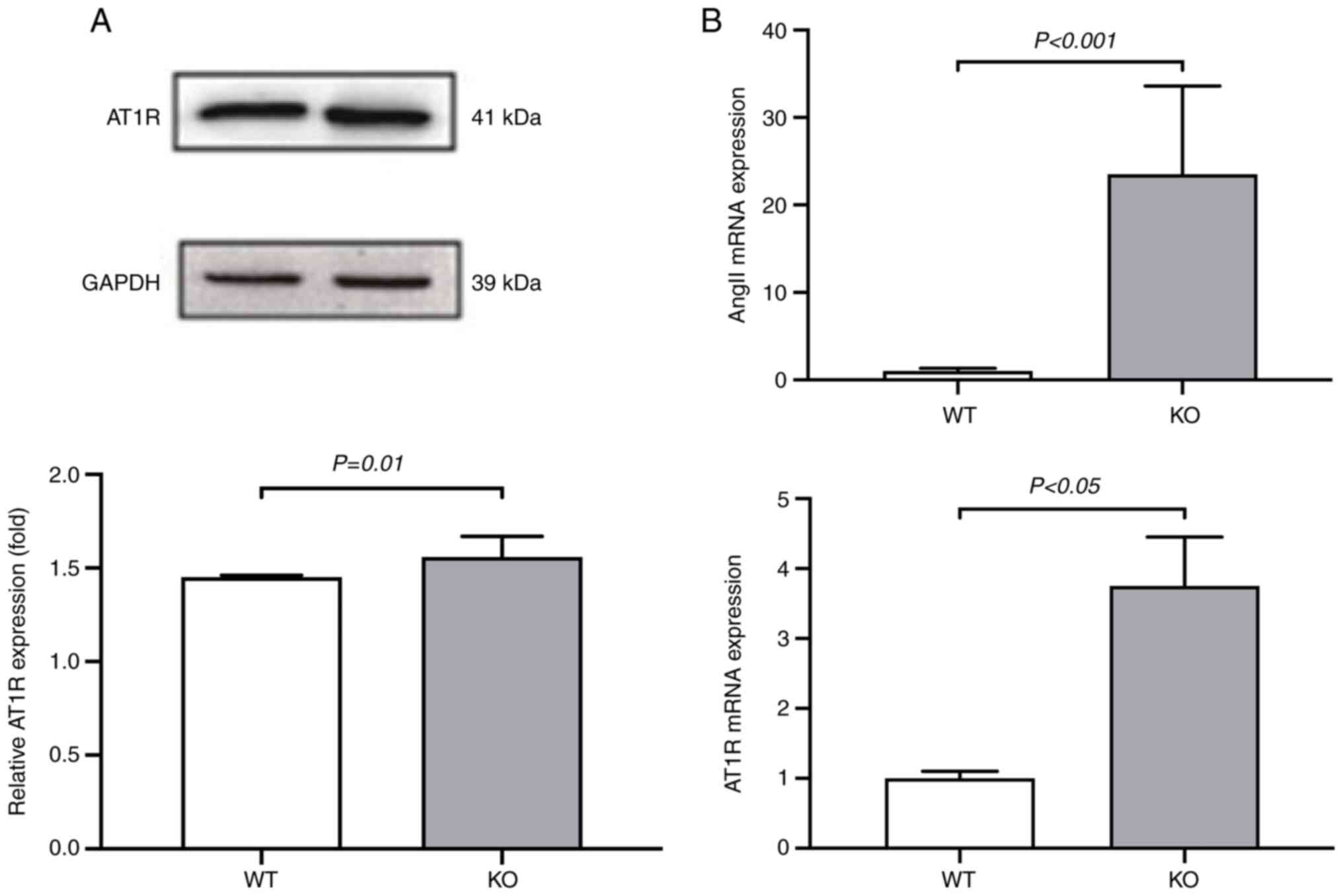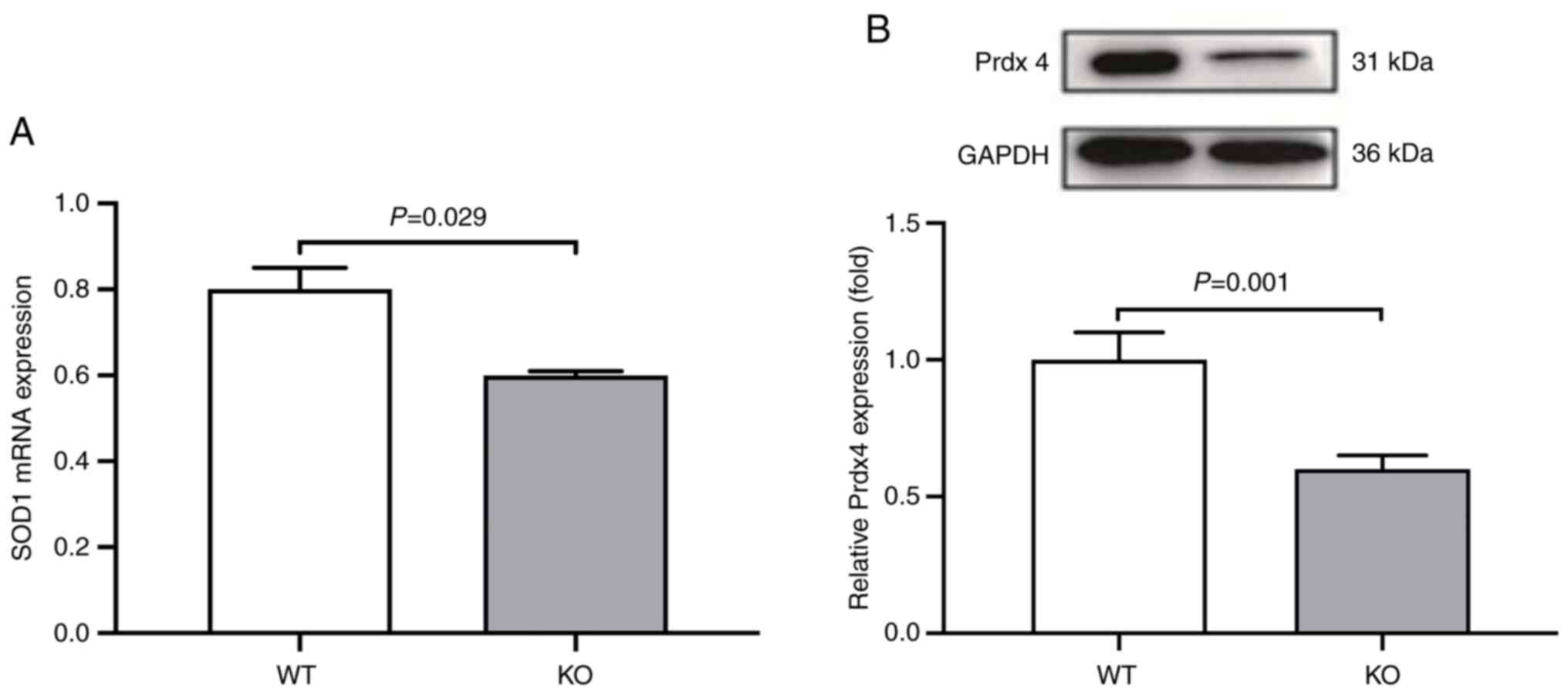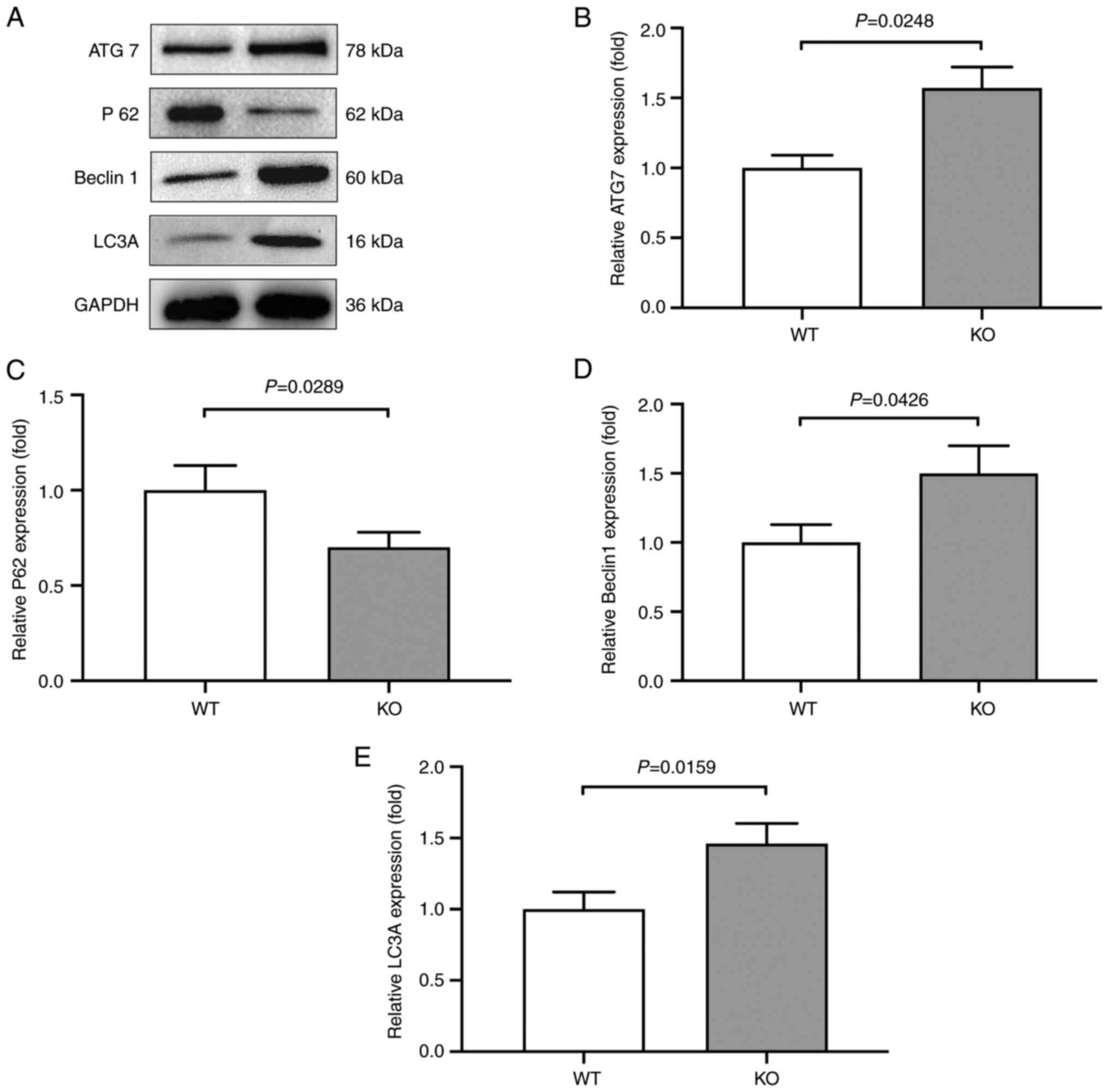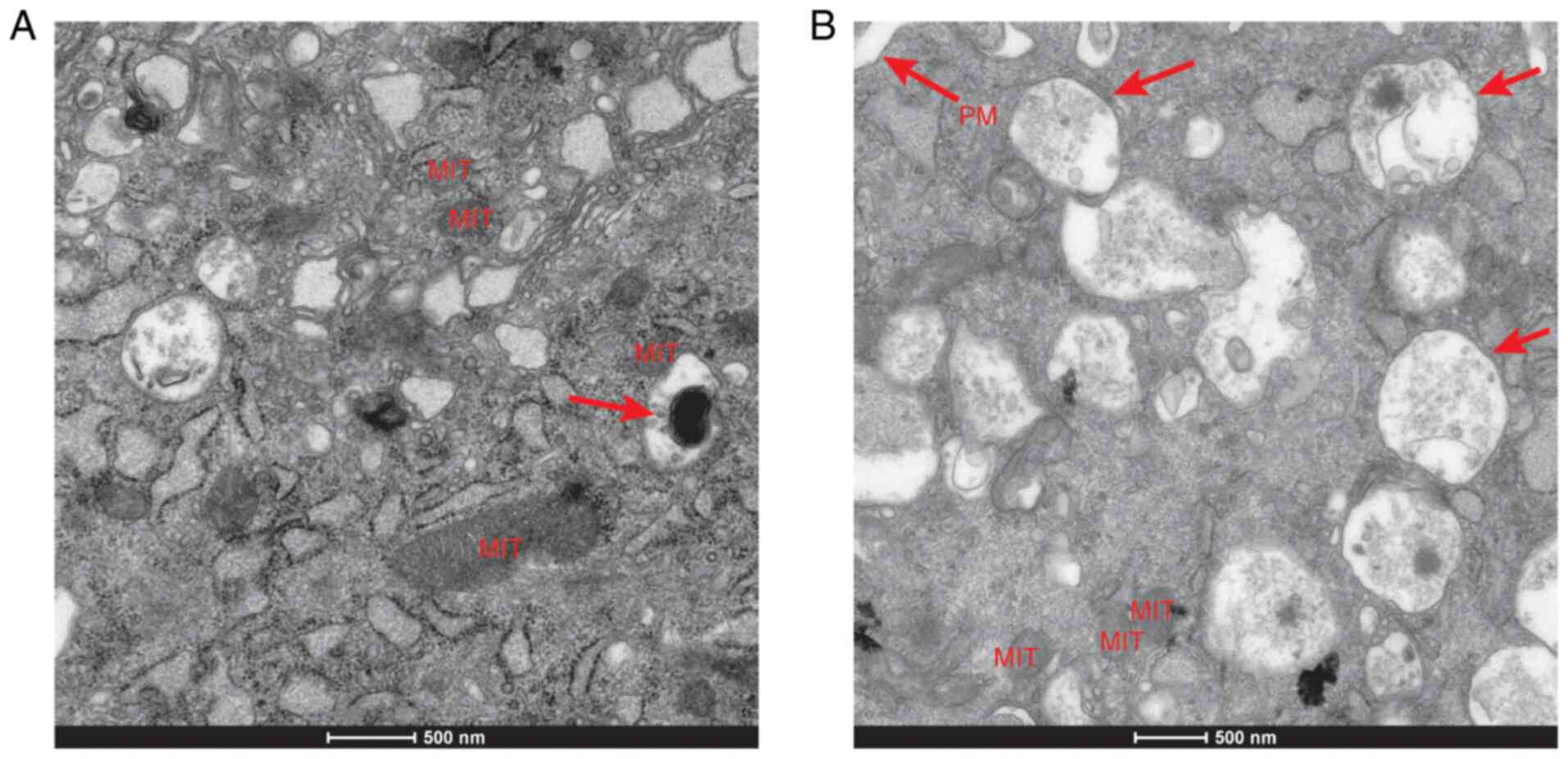|
1
|
Latic N and Erben RG: Vitamin D and
cardiovascular disease, with emphasis on hypertension,
atherosclerosis, and heart failure. Int J Mol Sci.
21(6483)2020.PubMed/NCBI View Article : Google Scholar
|
|
2
|
Tamez H, Kalim S and Thadhani RI: Does
vitamin D modulate blood pressure? Curr Opin Nephrol Hypertens.
22:204–209. 2013.PubMed/NCBI View Article : Google Scholar
|
|
3
|
Yuan W, Pan W, Kong J, Zheng W, Szeto FL,
Wong KE, Cohen R, Klopot A, Zhang Z and Li YC:
1,25-dihydroxyvitamin D3 suppresses renin gene transcription by
blocking the activity of the cyclic AMP response element in the
renin gene promoter. J Biol Chem. 282:29821–29830. 2007.PubMed/NCBI View Article : Google Scholar
|
|
4
|
Zhou C, Lu F, Cao K, Xu D, Goltzman D and
Miao D: Calcium-independent and 1,25(OH)2D3-dependent regulation of
the renin-angiotensin system in 1alpha-hydroxylase knockout mice.
Kidney Int. 74:170–179. 2008.PubMed/NCBI View Article : Google Scholar
|
|
5
|
Andersen LB, Przybyl L, Haase N, von
Versen-Höynck F, Qadri F, Jørgensen JS, Sorensen GL, Fruekilde P,
Poglitsch M, Szijarto I, et al: Vitamin D depletion aggravates
hypertension and target-organ damage. J Am Heart Assoc.
4(e001417)2015.PubMed/NCBI View Article : Google Scholar
|
|
6
|
Ji S, Doumit ME and Hill RA: Regulation of
adipogenesis and key adipogenic gene expression by 1,
25-dihydroxyvitamin D in 3T3-L1 cells. PLoS One.
10(e0126142)2015.PubMed/NCBI View Article : Google Scholar
|
|
7
|
Yin Y, Yu Z, Xia M, Luo X, Lu X and Ling
W: Vitamin D attenuates high fat diet-induced hepatic steatosis in
rats by modulating lipid metabolism. Eur J Clin Invest.
42:1189–1196. 2012.PubMed/NCBI View Article : Google Scholar
|
|
8
|
Asano L, Watanabe M, Ryoden Y, Usuda K,
Yamaguchi T, Khambu B, Takashima M, Sato SI, Sakai J, Nagasawa K
and Uesugi M: Vitamin D metabolite, 25-hydroxyvitamin D, regulates
lipid metabolism by inducing degradation of SREBP/SCAP. Cell Chem
Biol. 24:207–217. 2017.PubMed/NCBI View Article : Google Scholar
|
|
9
|
Wimalawansa SJ: Vitamin D deficiency:
Effects on oxidative stress, epigenetics, gene regulation, and
aging. Biology (Basel). 8(30)2019.PubMed/NCBI View Article : Google Scholar
|
|
10
|
Fujii J, Ikeda Y, Kurahashi T and Homma T:
Physiological and pathological views of peroxiredoxin 4. Free Radic
Biol Med. 83:373–379. 2015.PubMed/NCBI View Article : Google Scholar
|
|
11
|
Liu L, Li J, Deng C and Chen D: Advances
in the mechanism of vitamin D affecting autophagy. Zhonghua Wei
Zhong Bing Ji Jiu Yi Xue. 30:1103–1106. 2018.PubMed/NCBI View Article : Google Scholar : (In Chinese).
|
|
12
|
Jia J, Shen C, Mao L, Yang K, Men C and
Zhan Y: Vitamin D receptor genetic polymorphism is significantly
associated with decreased risk of hypertension in a Chinese Han
population. J Clin Hypertens (Greenwich). 16:634–639.
2014.PubMed/NCBI View Article : Google Scholar
|
|
13
|
Li YC, Pirro AE, Amling M, Delling G,
Baron R, Bronson R and Demay MB: Targeted ablation of the vitamin D
receptor: An animal model of vitamin D-dependent rickets type II
with alopecia. Proc Natl Acad Sci USA. 94:9831–9835.
1997.PubMed/NCBI View Article : Google Scholar
|
|
14
|
Boivin GP, Hickman DL, Creamer-Hente MA,
Pritchett-Corning KR and Bratcher NA: Review of CO2 as a
euthanasia agent for laboratory rats and mice. J Am Assoc Lab Anim
Sci. 56:491–499. 2017.PubMed/NCBI
|
|
15
|
Patel JJ, Bourne LE, Millán JL, Arnett TR,
MacRae VE, Wheeler-Jones CPD and Orriss IR: Inhibition of vascular
smooth muscle cell calcification by ATP analogues. Purinergic
Signal. 15:315–326. 2019.PubMed/NCBI View Article : Google Scholar
|
|
16
|
Livak KJ and Schmittgen TD: Analysis of
relative gene expression data using real-time quantitative PCR and
the 2(-Delta Delta C(T)) method. Methods. 25:402–408.
2001.PubMed/NCBI View Article : Google Scholar
|
|
17
|
Zhang J, Yuan L, Wang S, Liu J, Bi H, Chen
G, Li J and Chen L: Germacrone protects against oxygen-glucose
deprivation/reperfusion injury by inhibiting autophagy processes in
PC12 cells. BMC Complement Med Ther. 20(77)2020.PubMed/NCBI View Article : Google Scholar
|
|
18
|
Allison SJ: Hypertension: Oxidative stress
and immune activation in hypertension. Nat Rev Nephrol.
12(4)2016.PubMed/NCBI View Article : Google Scholar
|
|
19
|
Sinha N and Dabla PK: Oxidative stress and
antioxidants in hypertension-a current review. Curr Hypertens Rev.
11:132–142. 2015.PubMed/NCBI View Article : Google Scholar
|
|
20
|
Guzik TJ and Touyz RM: Oxidative stress,
inflammation, and vascular aging in hypertension. Hypertension.
70:660–667. 2017.PubMed/NCBI View Article : Google Scholar
|
|
21
|
Wang D, Strandgaard S, Iversen J and
Wilcox CS: Asymmetric dimethylarginine, oxidative stress, and
vascular nitric oxide synthase in essential hypertension. Am J
Physiol Regul Integr Comp Physiol. 296:R195–R200. 2009.PubMed/NCBI View Article : Google Scholar
|
|
22
|
Irani K: Oxidant signaling in vascular
cell growth, death, and survival: A review of the roles of reactive
oxygen species in smooth muscle and endothelial cell mitogenic and
apoptotic signaling. Circ Res. 87:179–183. 2000.PubMed/NCBI View Article : Google Scholar
|
|
23
|
Argacha JF, Egrise D, Pochet S, Fontaine
D, Lefort A, Libert F, Goldman S, van de Borne P, Berkenboom G and
Moreno-Reyes R: Vitamin D deficiency-induced hypertension is
associated with vascular oxidative stress and altered heart gene
expression. J Cardiovasc Pharmacol. 58:65–71. 2011.PubMed/NCBI View Article : Google Scholar
|
|
24
|
He L, He T, Farrar S, Ji L, Liu T and Ma
X: Antioxidants maintain cellular redox homeostasis by elimination
of reactive oxygen species. Cell Physiol Biochem. 44:532–553.
2017.PubMed/NCBI View Article : Google Scholar
|
|
25
|
Li S, Shao M, Li Y, Li X, Wan Y, Sun X and
Cao W: Relationship between oxidative stress biomarkers and visual
field progression in patients with primary angle closure glaucoma.
Oxid Med Cell Longev. 2020(2701539)2020.PubMed/NCBI View Article : Google Scholar
|
|
26
|
Kong J and Li YC: Effect of ANG II type I
receptor antagonist and ACE inhibitor on vitamin D receptor-null
mice. Am J Physiol Regul Integr Comp Physiol. 285:R255–R261.
2003.PubMed/NCBI View Article : Google Scholar
|
|
27
|
Tomaschitz A, Pilz S, Ritz E, Grammer T,
Drechsler C, Boehm BO and März W: Independent association between
1,25-dihydroxyvitamin D, 25-hydroxyvitamin D and the
renin-angiotensin system: The ludwigshafen risk and cardiovascular
health (LURIC) study. Clin Chim Acta. 411:1354–1360.
2010.PubMed/NCBI View Article : Google Scholar
|
|
28
|
Xiang W, Kong J, Chen S, Cao LP, Qiao G,
Zheng W, Liu W, Li X, Gardner DG and Li YC: Cardiac hypertrophy in
vitamin D receptor knockout mice: Role of the systemic and cardiac
renin-angiotensin systems. Am J Physiol Endocrinol Metab.
288:E125–E132. 2005.PubMed/NCBI View Article : Google Scholar
|
|
29
|
Kong J, Qiao G, Zhang Z, Liu SQ and Li YC:
Targeted vitamin D receptor expression in juxtaglomerular cells
suppresses renin expression independent of parathyroid hormone and
calcium. Kidney Int. 74:1577–1581. 2008.PubMed/NCBI View Article : Google Scholar
|
|
30
|
Galluzzi L and Green DR:
Autophagy-independent functions of the autophagy machinery. Cell.
177:1682–1699. 2019.PubMed/NCBI View Article : Google Scholar
|
|
31
|
Tai S, Hu XQ, Peng DQ, Zhou SH and Zheng
XL: The roles of autophagy in vascular smooth muscle cells. Int J
Cardiol. 211:1–6. 2016.PubMed/NCBI View Article : Google Scholar
|
|
32
|
Salabei JK and Hill BG: Implications of
autophagy for vascular smooth muscle cell function and plasticity.
Free Radic Biol Med. 65:693–703. 2013.PubMed/NCBI View Article : Google Scholar
|
|
33
|
Justin Rucker A and Crowley SD: The role
of macrophages in hypertension and its complications. Pflugers
Arch. 469:419–430. 2017.PubMed/NCBI View Article : Google Scholar
|
|
34
|
Dong Q, Xing W, Fu F, Liu Z, Wang J, Liang
X, Zhou X, Yang Q, Zhang W, Gao F, et al: Tetrahydroxystilbene
glucoside inhibits excessive autophagy and improves microvascular
endothelial dysfunction in prehypertensive spontaneously
hypertensive rats. Am J Chin Med. 44:1393–1412. 2016.PubMed/NCBI View Article : Google Scholar
|
|
35
|
Dong Q, Xing W, Su F, Liang X, Tian F, Gao
F, Wang S and Zhang H: Tetrahydroxystilbene glycoside improves
microvascular endothelial dysfunction and ameliorates
obesity-associated hypertension in obese ZDF rats via inhibition of
endothelial autophagy. Cell Physiol Biochem. 43:293–307.
2017.PubMed/NCBI View Article : Google Scholar
|
|
36
|
Mondaca-Ruff D, Riquelme JA, Quiroga C,
Norambuena-Soto I, Sanhueza-Olivares F, Villar-Fincheira P,
Hernández-Díaz T, Cancino-Arenas N, San Martin A, García L, et al:
Angiotensin II-regulated autophagy is required for vascular smooth
muscle cell hypertrophy. Front Pharmacol. 9(1553)2018.PubMed/NCBI View Article : Google Scholar
|
|
37
|
Wang ZV, Rothermel BA and Hill JA:
Autophagy in hypertensive heart disease. J Biol Chem.
285:8509–8514. 2010.PubMed/NCBI View Article : Google Scholar
|
|
38
|
Zhou L, Ma B and Han X: The role of
autophagy in angiotensin II-induced pathological cardiac
hypertrophy. J Mol Endocrinol. 57:R143–R152. 2016.PubMed/NCBI View Article : Google Scholar
|



















